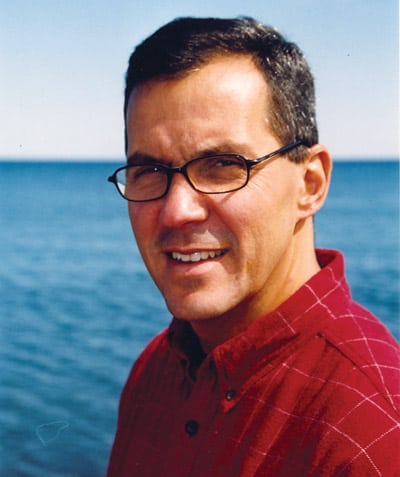Seeing first hand the long term wisdom contained in the Wilderness Act.
Bill Hansen has had a unique relationship with the Quetico Superior region. Raised on Sawbill Lake, he saw a transition the region made after the passage of the Boundary Waters Act in 1978 and stayed to develop a successful canoe outfitting business. His interests in environment and community prompted a life-long commitment to community involvement.
Charlie Mahler/Wilderness News interviewed Hansen in fall 2005.
WN: Your parents were outfitters prior to the 1978 Boundary Waters Act. Can you describe what life was like for you in your youth and what your corner of what is now the bwcaw was like back then?
My parents, Frank and Mary Alice Hansen, started Sawbill Canoe Outfitters in 1957. Our neighbor, Sawbill Lodge, still had the airplane that they had been using for several years to fly to inland lakes before the air ban. They also had some of the wood and canvas canoes, although they were using the new, lightweight Grummans that were popular then.
Although I loved canoeing and wilderness camping from the start, I spent the majority of my youth in a motor boat. I had my own boat and motor when I was seven, and gradually increased horsepower over the years. Eventually I had a racing hydroplane that topped 35 mph.
It was a wonderful life of fishing, hunting, camping and exploring. I had an endless supply of friends from the lodge and campground, many of whom remain good friends.
WN: I’ve heard that initially you weren’t pleased with the restrictions that came to the Sawbill area after 1978. How did you go from that attitude to being a wilderness proponent now?
I supported the wilderness improvements in 1978. But the loss of motors was a business and personal loss. I had to give up a personal tradition of motorboat fishing and snowmobiling, along with three lucrative businesses: towing canoes, motor repair, and boat/motor rental.
After the bwca Wilderness bill passed in ‘78, the lost business was replaced very quickly by non-motorized visitors. The wilderness qualities of the area, especially near Sawbill, improved immediately. It was quieter, people saw more wildlife, fishing improved and the water was cleaner.
I’ve seen first hand the long term wisdom contained in the Wilderness Act. I consider it one of the great pieces of legislation in American history. It is on the same level as the 19th Amendment giving women the right to vote, the Civil Rights Act, the Voting Rights Act, and the Bill of Rights.
WN: The wilderness designation was and is a contentious issue in northern Minnesota. Is time healing the divide, or are there sticking points that could really flare up tensions again?
Time is improving the local attitude toward wilderness. The wilderness pays a strong economic dividend to the local economy. It also gives us a relatively intact eco-system, providing clean air, clean water, and outstanding recreation opportunities. These are now viewed as important assets by most people who live near the wilderness.
WN: You made two unsuccessful runs for the State Legislature recently, and have a long resume of community involvement in the Grand Marais area. What prompted you to be so involved in your community?
My parents have always been deeply involved in community activities. Also, in a small community, you are almost obligated to take your turn, if you have any interest at all.
WN: You’re also known as a successful businessman. Is canoe outfitting in northern Minnesota a good way to earn a living?
It is the most wonderful way to make a living. It probably involves more bathroom cleaning than most people imagine, but we get to live in a place where we look at beauty every day.
WN: I’ve heard your talk about sustainable and non-sustainable enterprises in the northwoods. What direction do you think business enterprises in the north need to pursue?
Business everywhere must become sustainable. The choice is whether we plan for an orderly and rational path to sustainability, or wait for our unsustainable practices to lead us into crisis. The bwca Wilderness is the only resource in Minnesota that is deliberately managed for long term sustainability. It can act as a model for planning the sustainability of other resources. Given the painful and difficult history of making the wilderness sustainable, it does not bode well for the future sustainability of manufacturing, agriculture, and settlement, to name a few.
WN: As busy as you seem to be, do you get to spend much of your own time deep in the wilderness? Where are your favorite places to go?
I never get to spend enough time in the wilderness. I strive to be out at least twenty days a year. I consider it continuing education for an outfitter. I can’t name a favorite place, although I did travel the Louse River route in the bwca Wilderness twelve times in twelve years in the ‘70s and ‘80s.
This article appeared in Wilderness News Spring 2006


